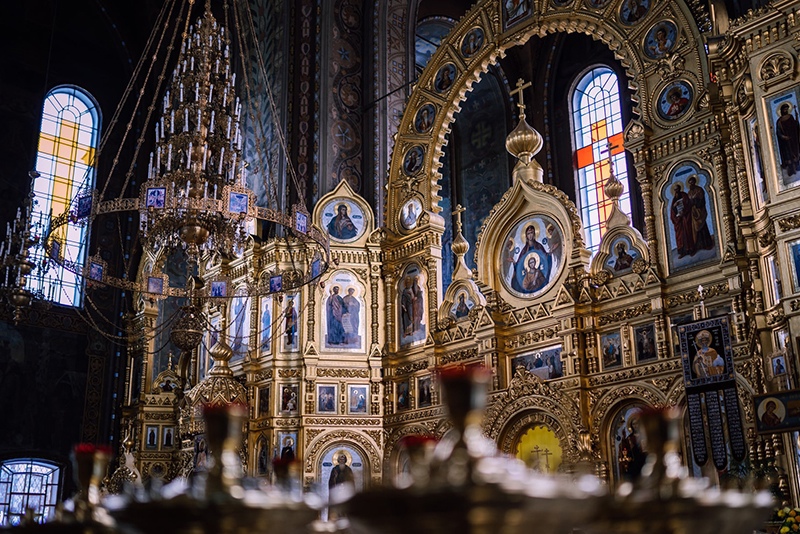
One cannot imagine a bishop without a miter, which is, if not the most important, but nevertheless remarkable and quite ancient element of bishop’s insignia. The miter is one of the distinctive features of the upper clergy. It is used not only in the Orthodox Church, but also in other Christian denominations. What is the origin of this headpiece? What is its symbolism?
Origin
The miter (Ancient Greek. Μίτρα – belt, headband) is a liturgical headdress made of expensive fabrics and richly decorated, reminiscent of the imperial crown, and is traditionally one of the distinctive features of the bishops. Its origin, like that of many other liturgical objects, is not precisely identified, but there are generally accepted versions of its genesis. It is assumed that miters are the equivalent of the Jewish high priest’s headdress. It is known from the hagiographies that the Apostles John the Theologian and James the Lord’s Brother wore headbands, reminiscent of a miter, but it is difficult to establish the connection between the miter they wore and the miter we use today, because other sources remain silent about it. A more plausible version is the hypothesis that miter is nothing but an imperial crown, the royal tiara, historically worn by both Oriental kings and the Byzantine emperors.
The Popes of Rome and Alexandria
It is unclear when bishops first started wearing crowns that originally looked like small headbands or hats. The famous canon scholar Theodore Balsamon (12th century) as well as St. Symeon of Thessalonica (15th century) believed that the Popes were the first to wear the miter in the 4th century. St. Cyril of Alexandria († 444), who represented Holy Pope Celestine († 432) at the Council of Ephesus (431), wore the miter as a sign of this honorary representation. However, St. Symeon of Thessalonica argued that this fact can be explained simply by the ancient Alexandrian tradition and that representation had nothing to do with it. The exclusive right of the Popes to wear the crown during the divine service was justified by the gift of King Constantine to the Holy Pope Sylvester, but there are some sufficiently substantiated doubts about its authenticity. At any rate, only the Roman and Alexandrian hierarchs wore the liturgical miter in the first millennium. With the rise of the See of Constantinople, emperors began to award the Patriarch of Constantinople their royal regalia, including the miter, which became an integral part of the bishop’s insignia only in the second millennium. In the event of concelebration with the first hierarch, other bishops served without miter. Unlike other Churches, in the Russian Church miter began to be used also by archimandrites and later on by married priests as a reward for their pastoral work.
Symbolism
The priest is an icon of Christ the King at the Liturgy and celebrates the Liturgy in His Name, calling for the grace of the Holy Spirit. The bishop, on the other hand, is the chief priest in the Christian community, so it is they who are the first to adopt the privilege of wearing the miter as a sign of Christ’s royal dignity. According to the Apostle Peter, Christians are a royal priesthood, an holy nation (1 Peter 2:9), and the Apostle John the Theologian echoes Cephas: And hast made us unto our God kings and priests: and we shall reign on the earth (Rev. 5:10). The crowns are given to all the faithful, which finds expression in the Sacrament of Marriage, when both the man and the woman stand in crowns and the same prayer is said as when a bishop puts on his miter. The miter also traditionally symbolizes the Savior’s crown of thorns, which all bishops must remember by wearing the magnificent diadem. The crown can be understood as the headband of the buried Lord, which is the mark of the Resurrection of Christ.
Thus, in spite of the importance of the symbolic meaning of the miter and the permission to use it during the divine service, the Orthodox divine service emphasizes the ancient norm of praying bareheaded, and prescribes that headgear should be taken off during the most important and crucial moments of the service. Only the bishop’s miter has the privilege of resting on the Holy Table, unlike other miters and kamilavkas. This reminds us of the twenty-four elders of the Apocalypse who cast their crowns before the throne (Rev. 4:10) praising God, to which every Christian is called.



